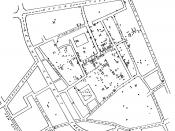� PAGE \* MERGEFORMAT �1�
Public health intelligence
Name
Institution
Course
Tutor
Date
�
Table of Contents
3Introduction �
3Prevalence of the disease �
4Demographics �
4Methods �
5Results �
7Discussion �
10Conclusion �
12Reference List �
17Appendix �
�
�
Public health intelligence
Introduction
Cholera appeared probably for the first time in Haiti in October 2010 (Shumway and Stoffera 2011). The vibrio Importation triggered an epidemic that quickly proved to be the earth's major outbreak of the seventh cholera pandemic. The Haitian and Dominican governments In January 2012, along with the United Nations International Children's Emergency Fund (UNICEF), the World Health Organization (WHO), and lots of their partners adopted a cholera eradication objective (Jenson et al., 2011). However, to set up successful control and eradication policies, strategies are dependent on the analysis of the cholera dissemination dynamics (Frerichs et al., 2012). Different mathematical models have been recognized to bolster management policies.
They have given varying results, thus demonstrating the significance of mathematical assumptions as well as parameter estimations. One model, publicized in March 2011, forecasted 779,000 cases as well as 11,000 deaths for November 2011. Another model predicted that the major peak of the epidemic would take place in April 2011 in a number of departments (Periago et al. 2012).
Prevalence of the disease
In this case, there is a noticeable and unexpected decrease in cholera incidence in the initial months of 2011 followed by a fresh outbreak in May (Hendriksen et al., 2011). This observation shows how important it is to produce a comprehensive cholera diffusion description and monitor cases every day at a communal level. In other regions affected by recurring cholera epidemics, it has been demonstrated that studying the cholera outbreaks spatio-temporal dynamics assisted in defining more effective management procedures (Bertuzzo et al., 2011). At...


